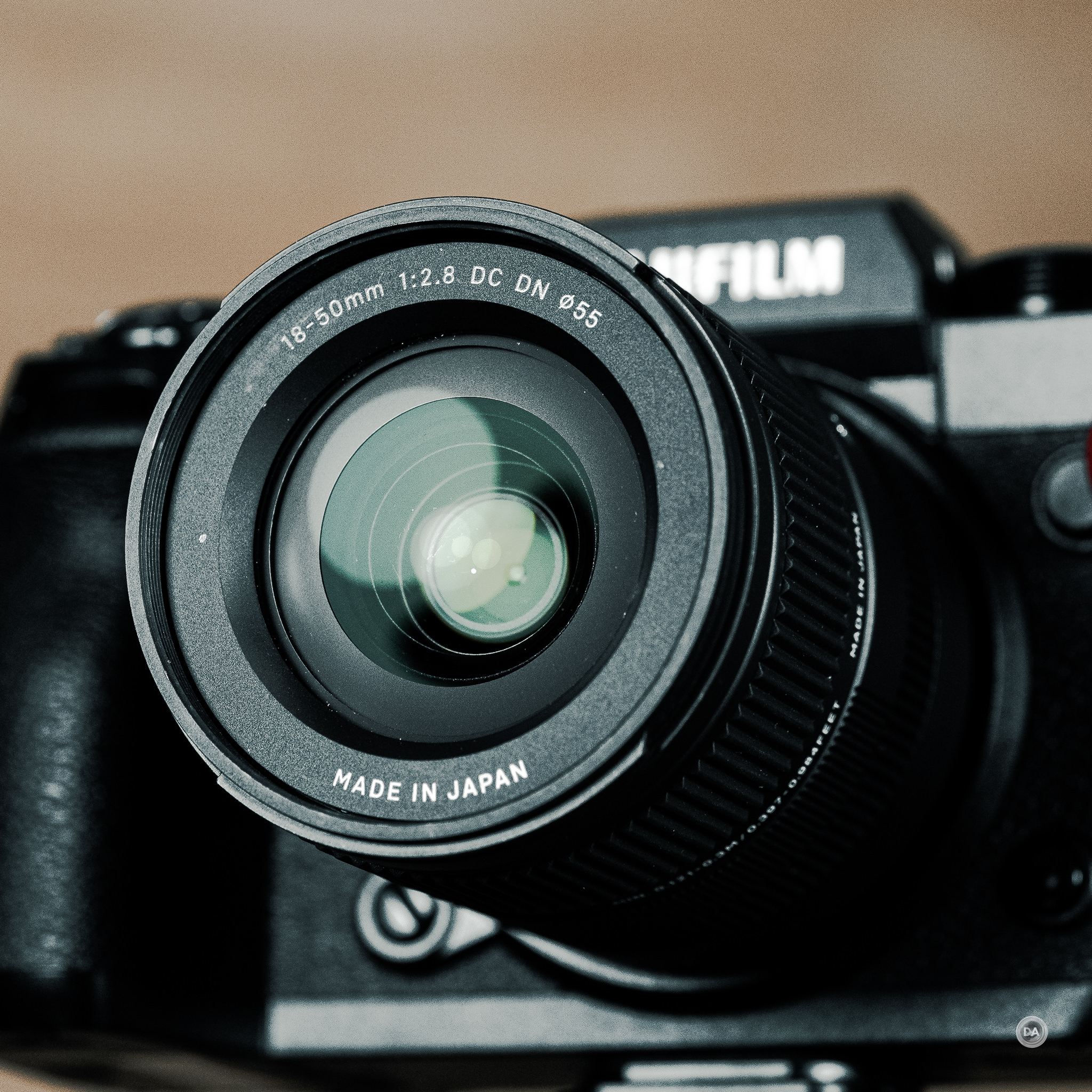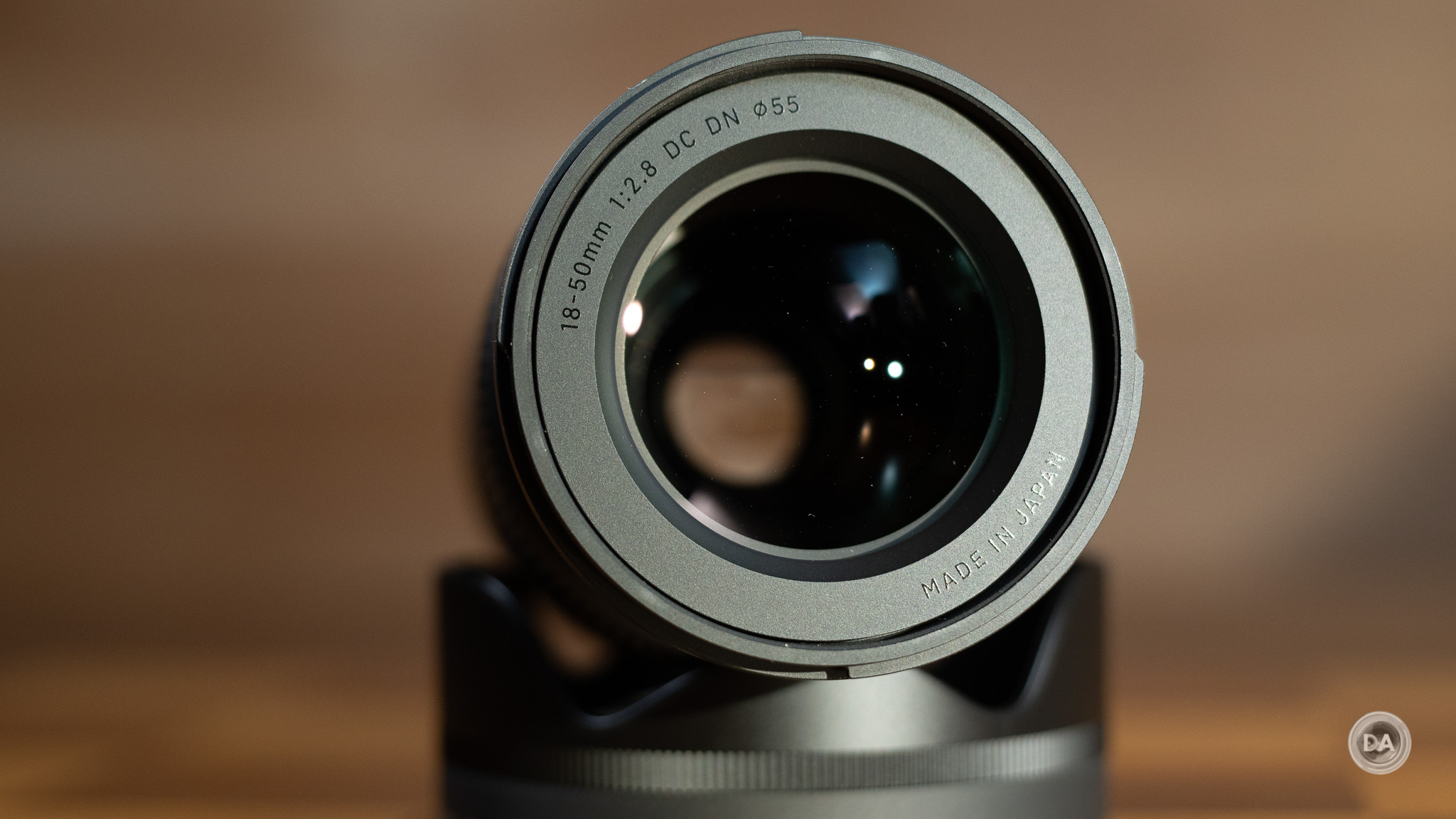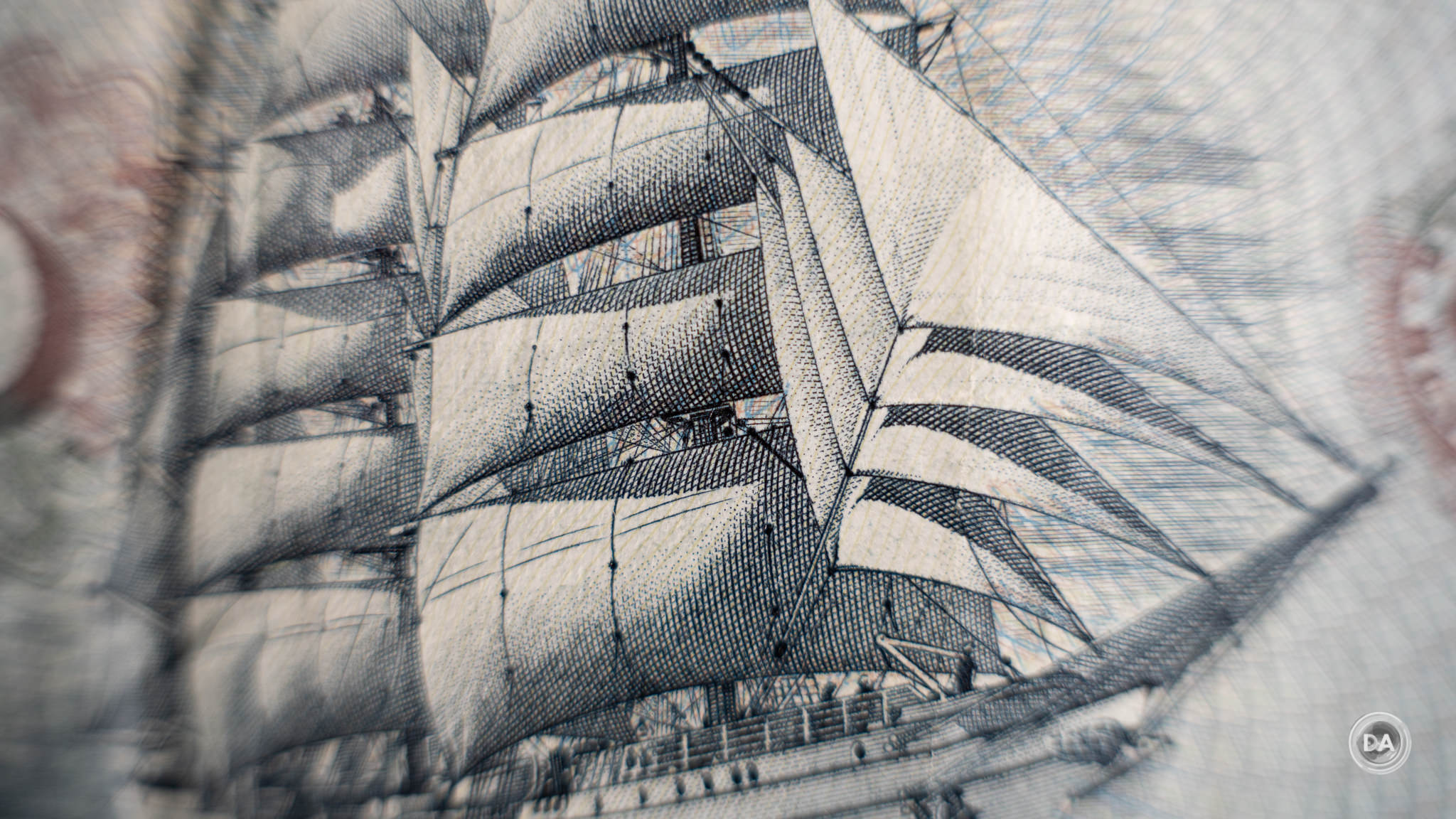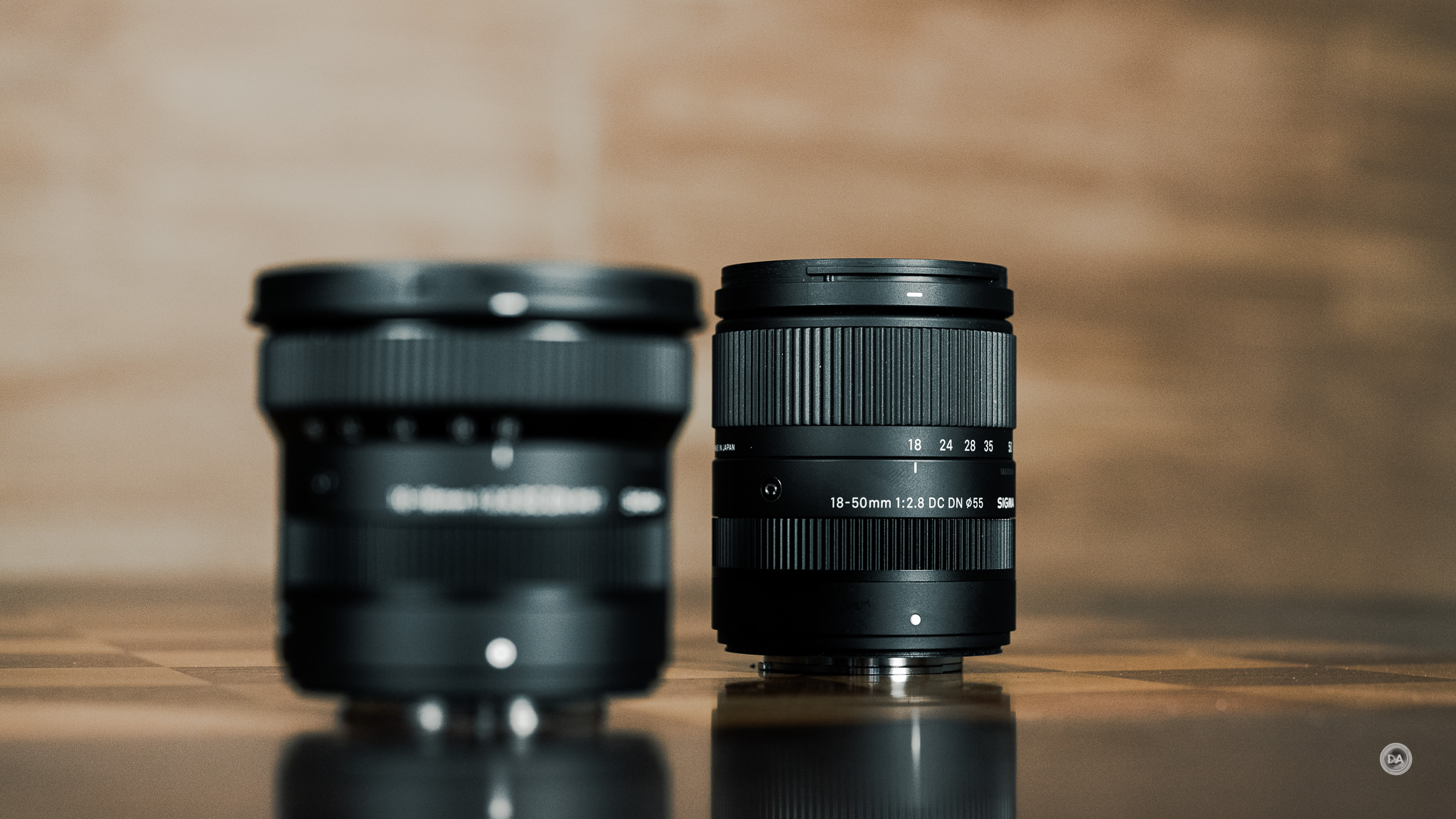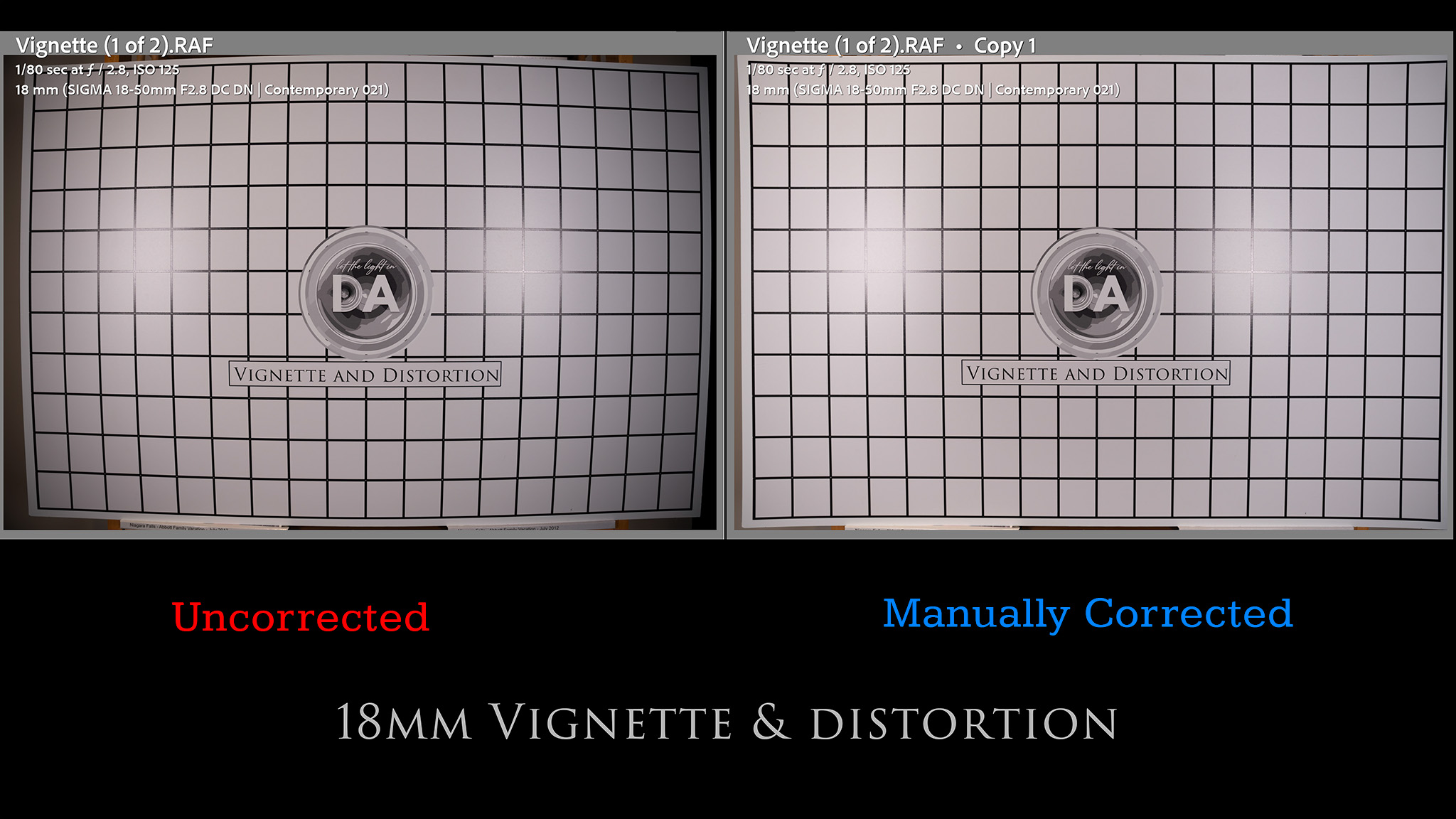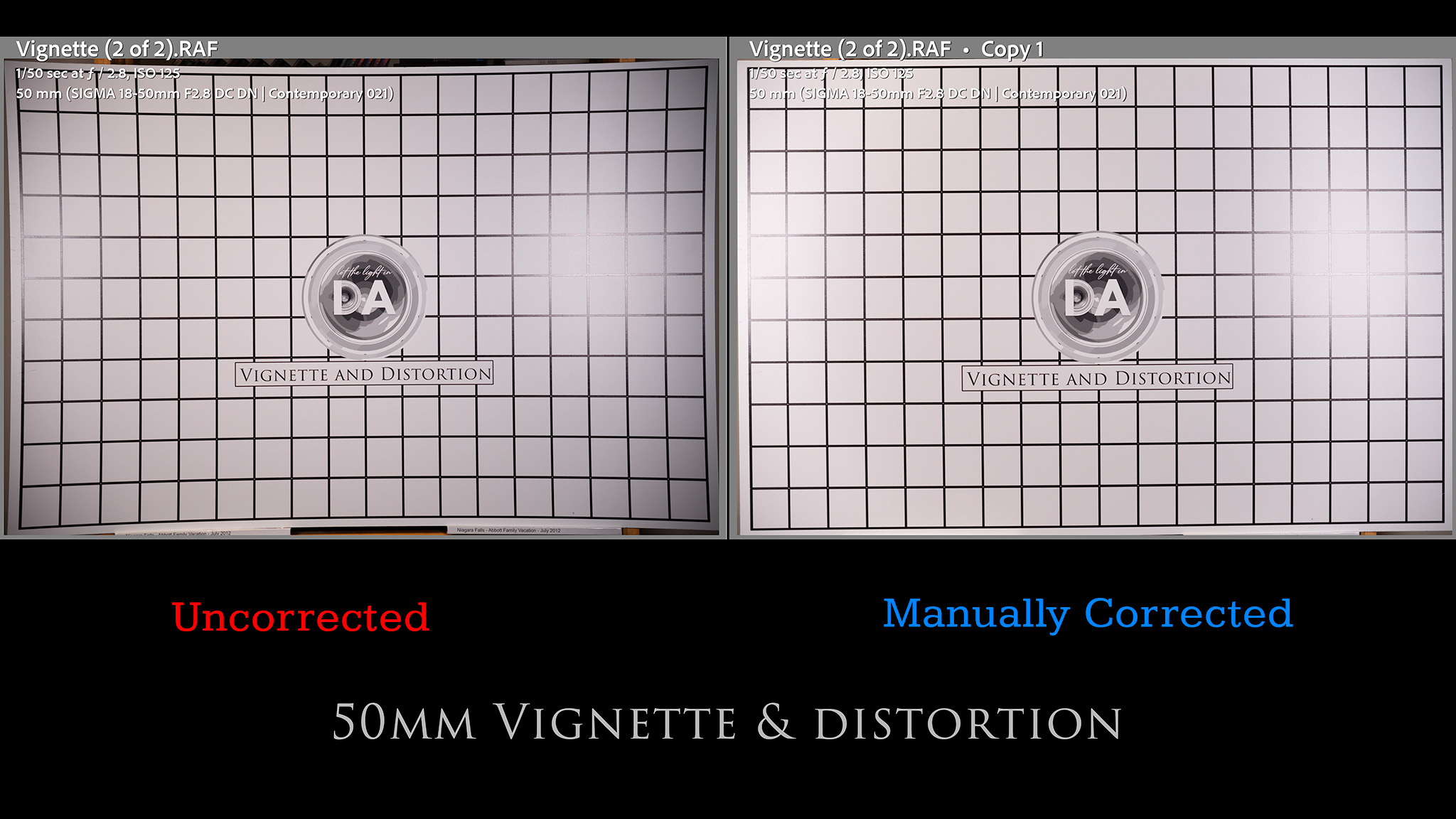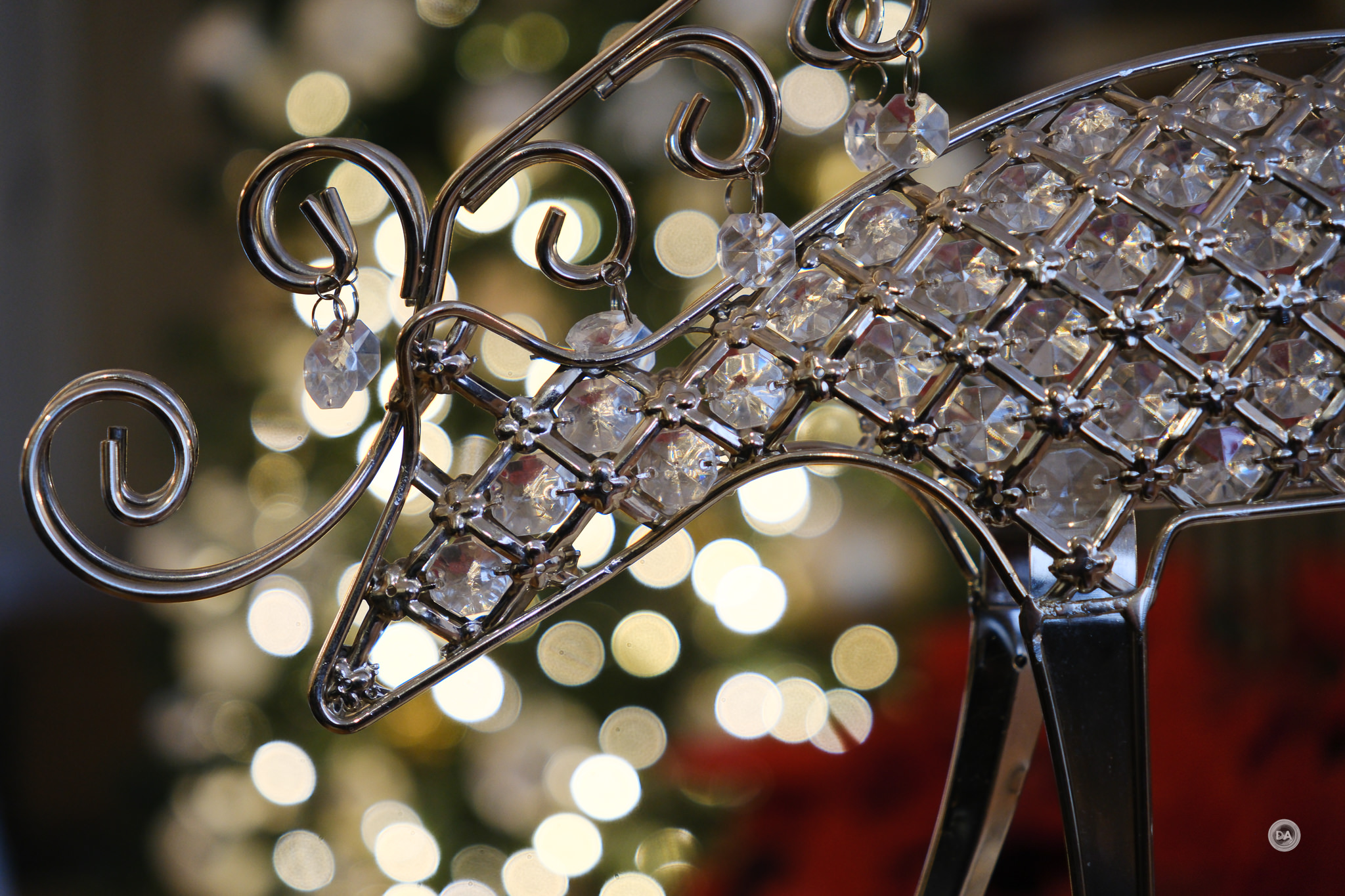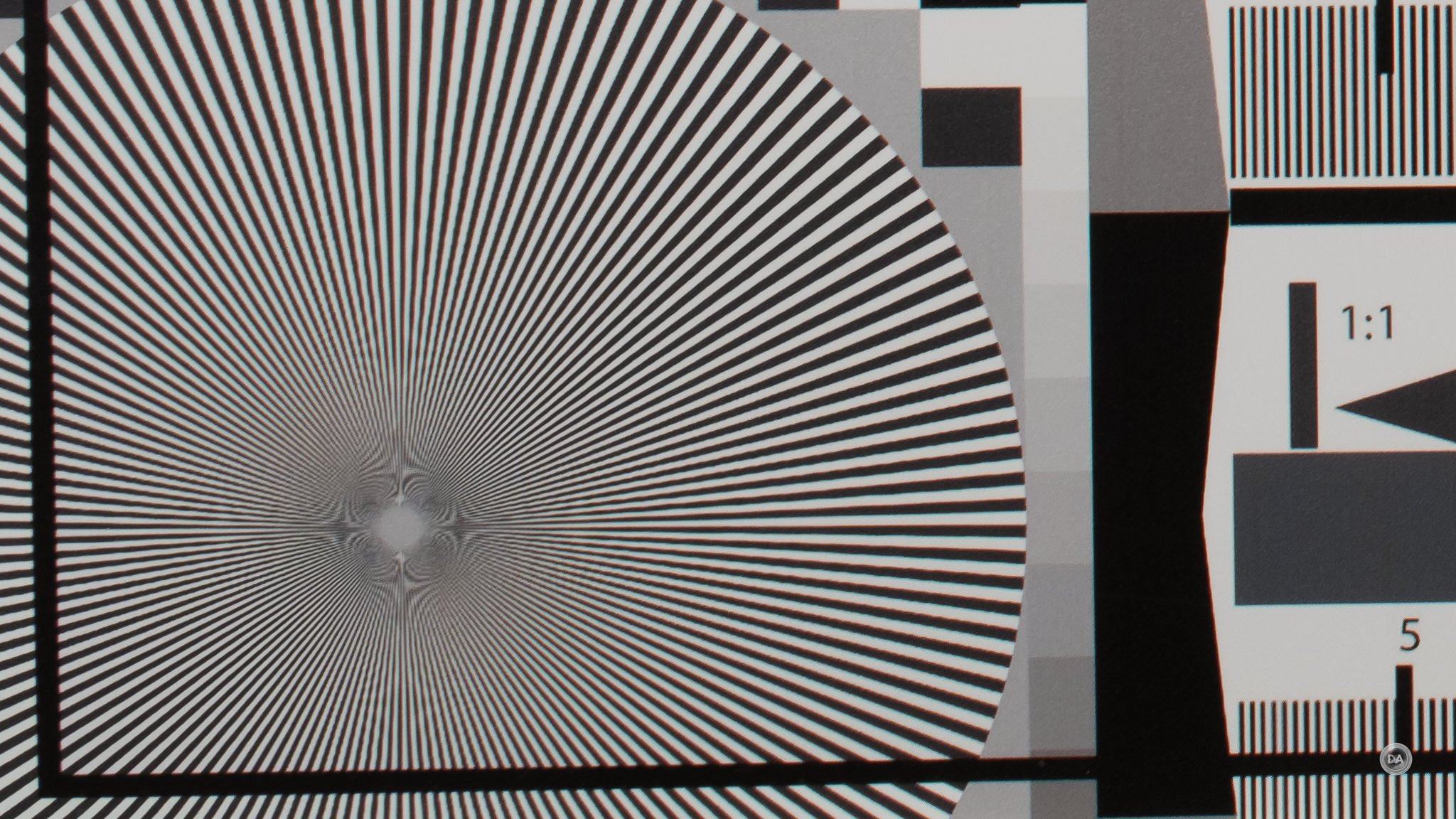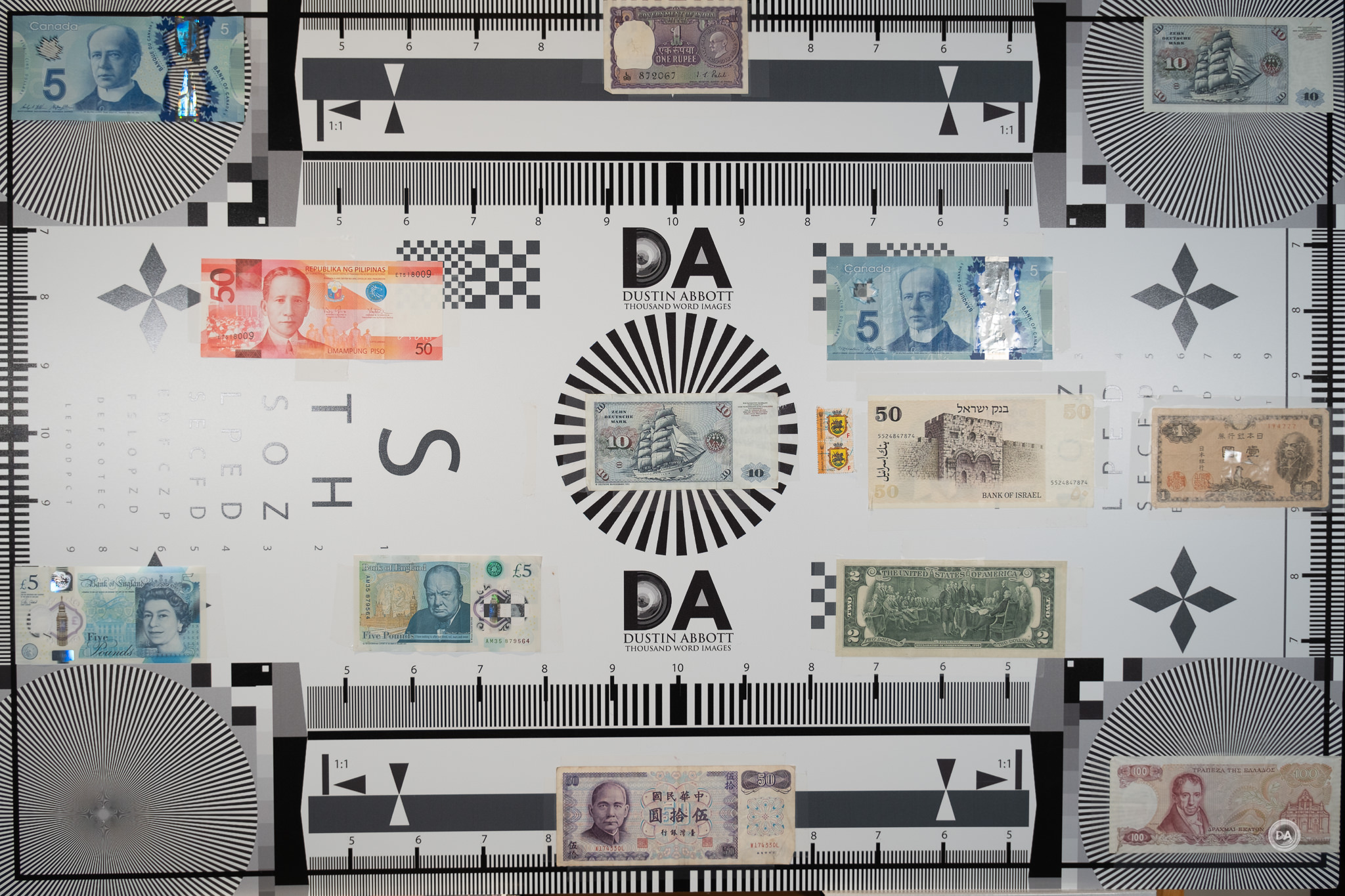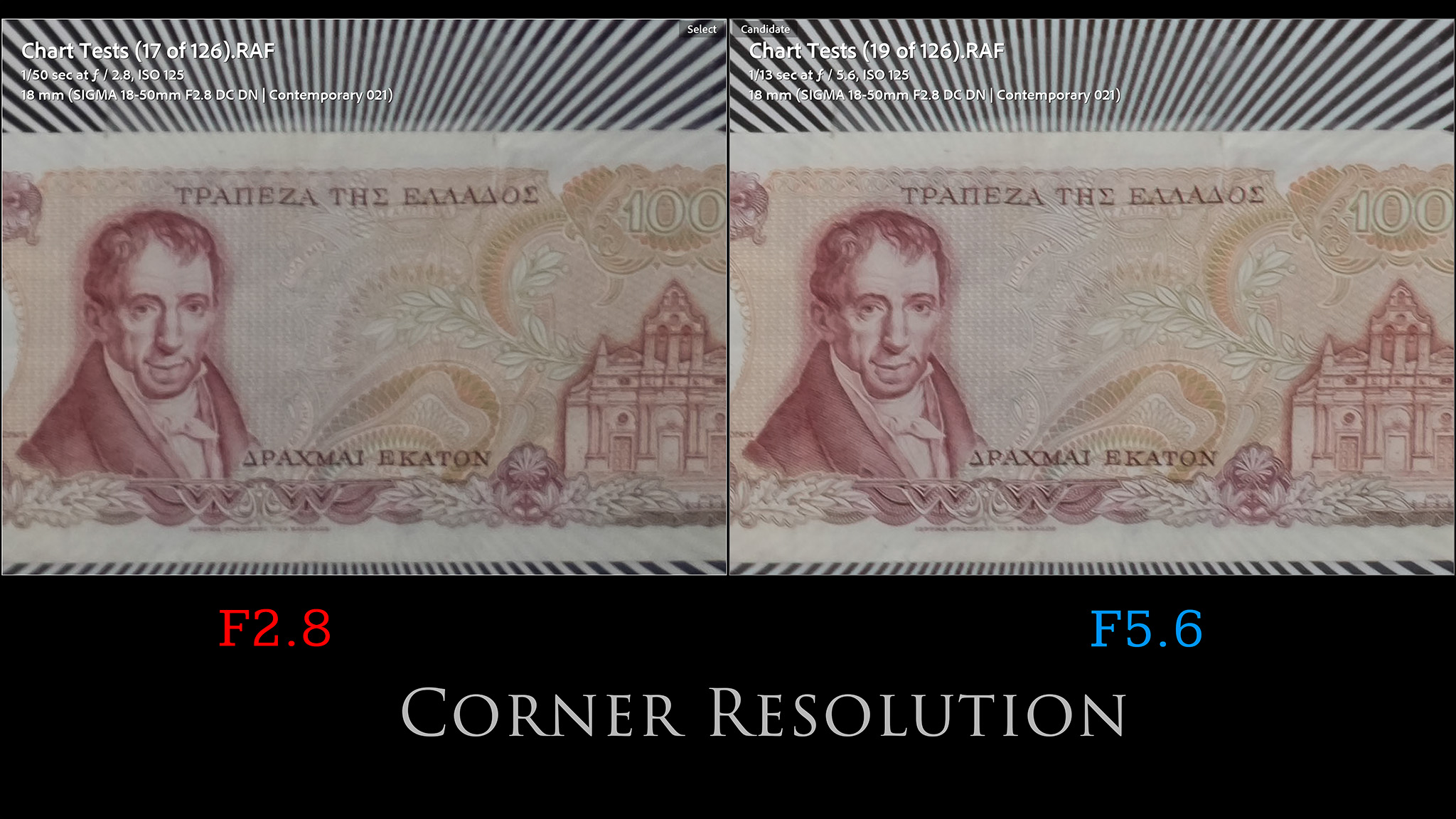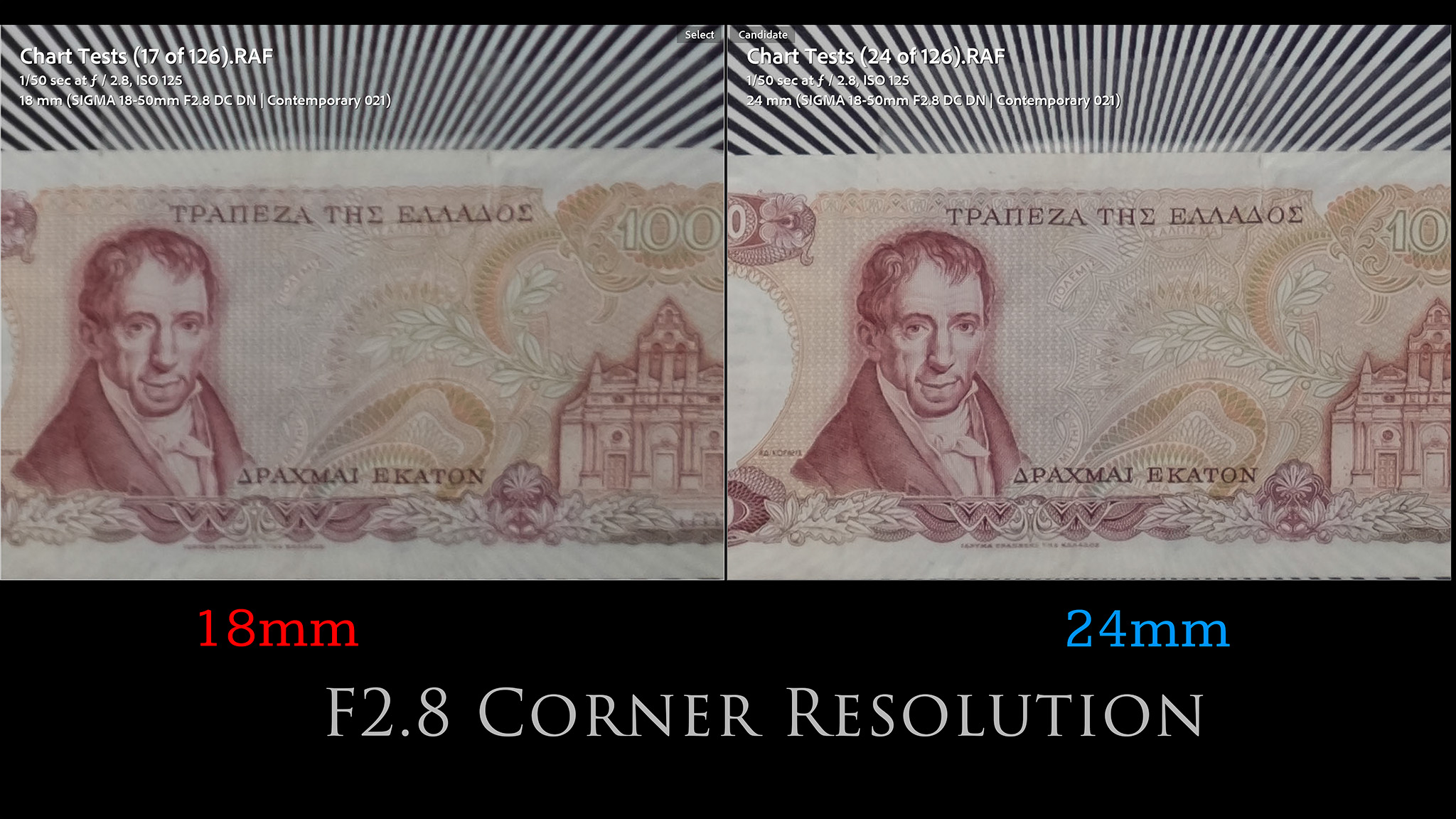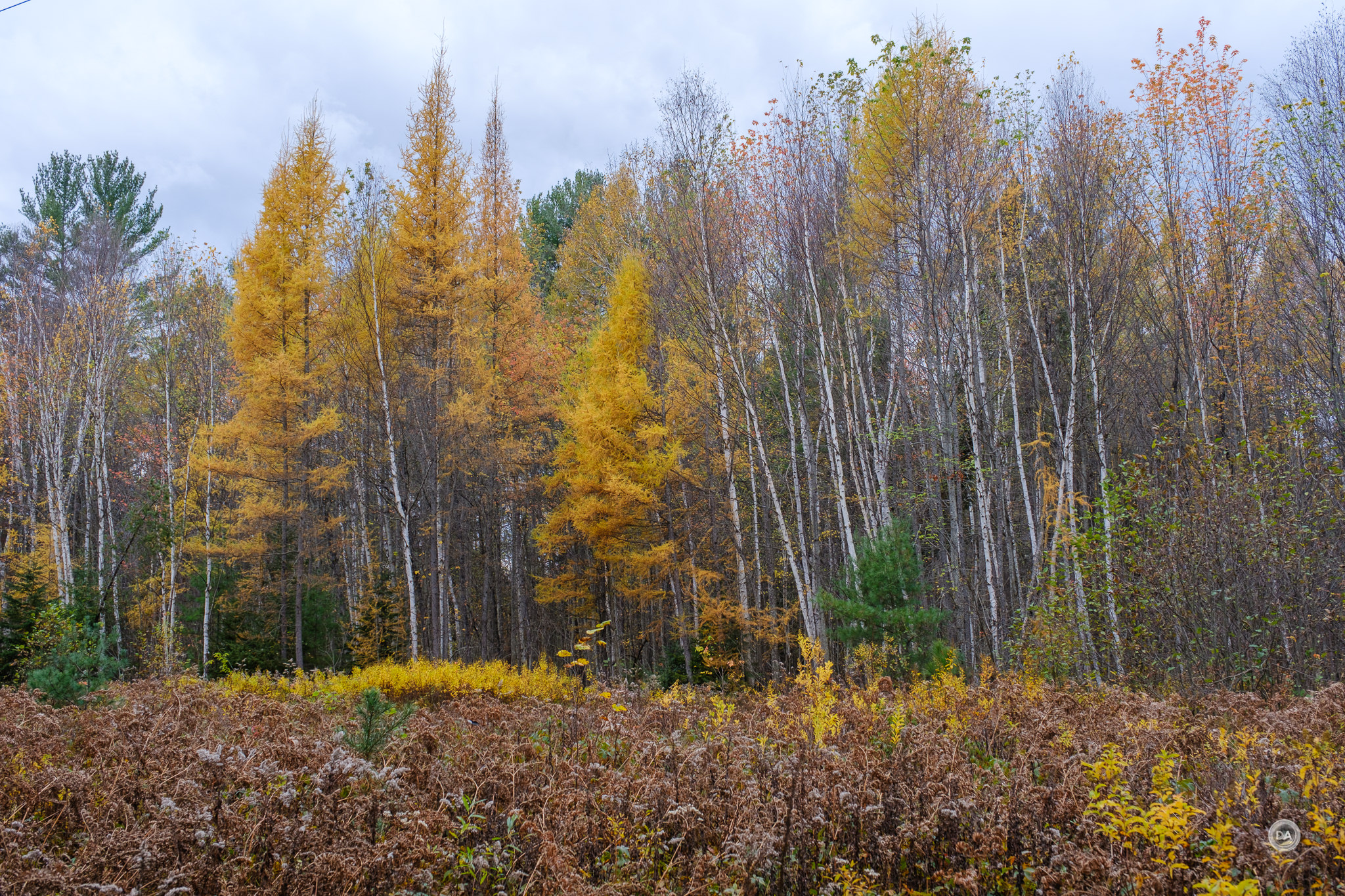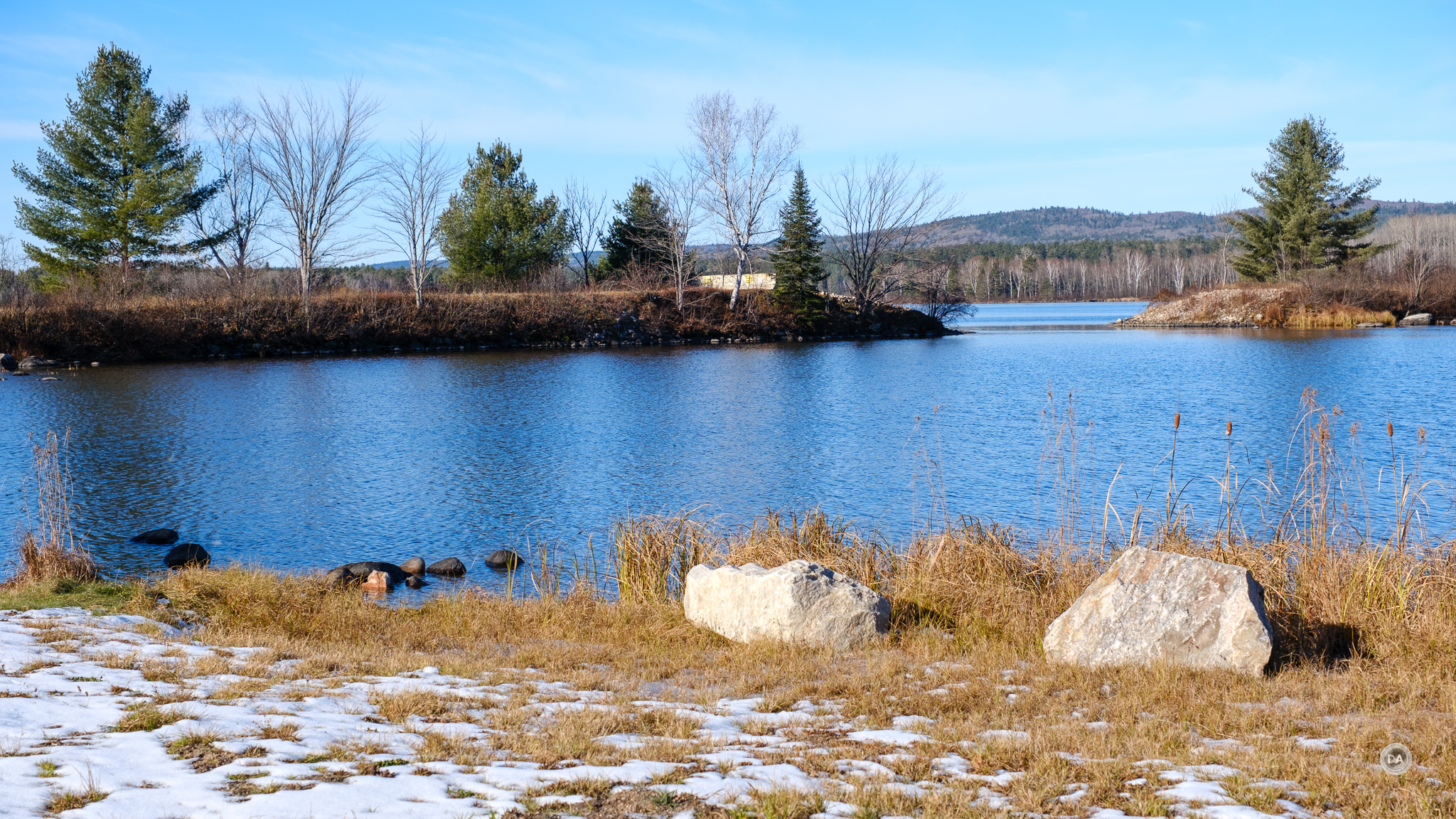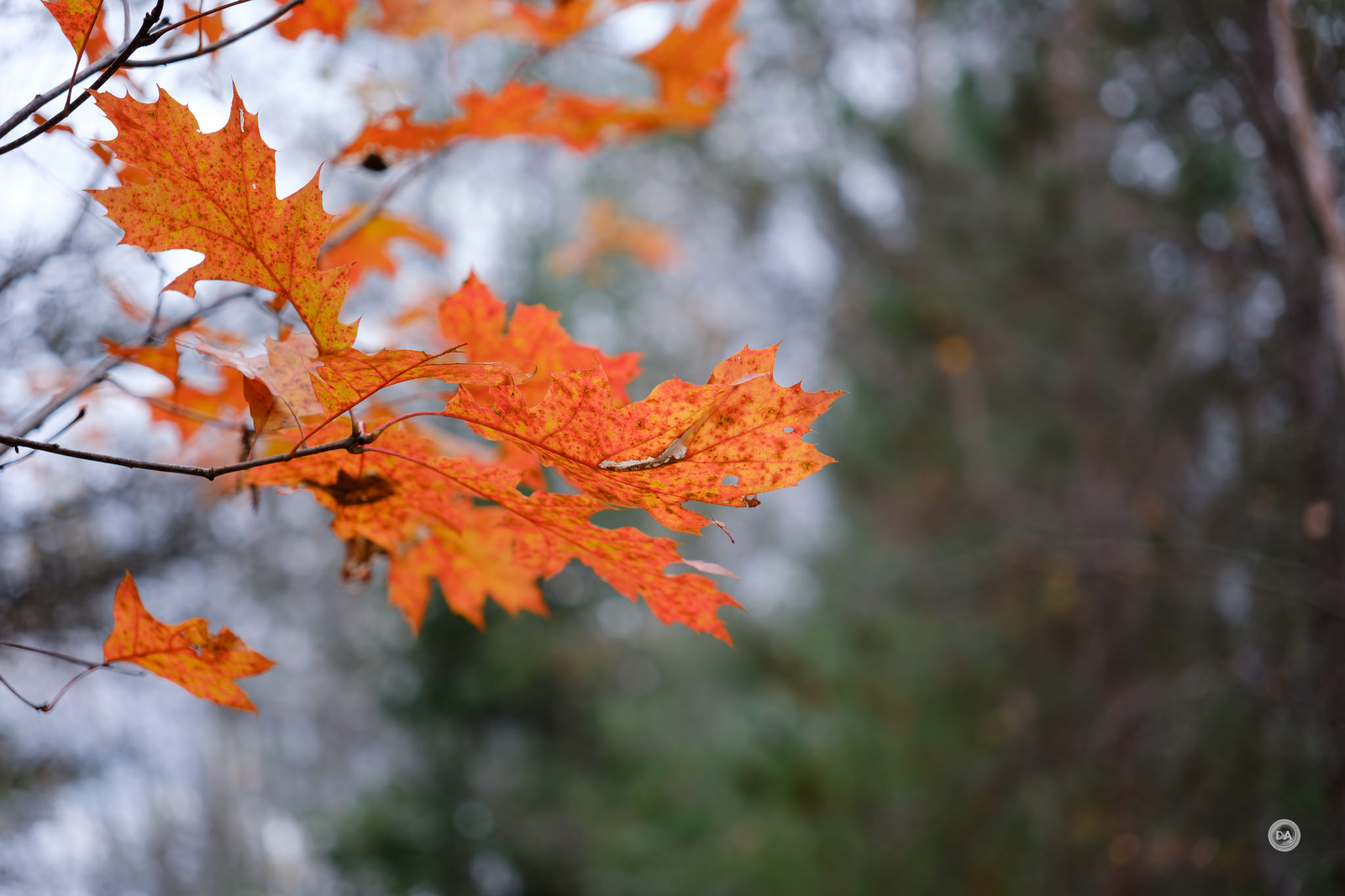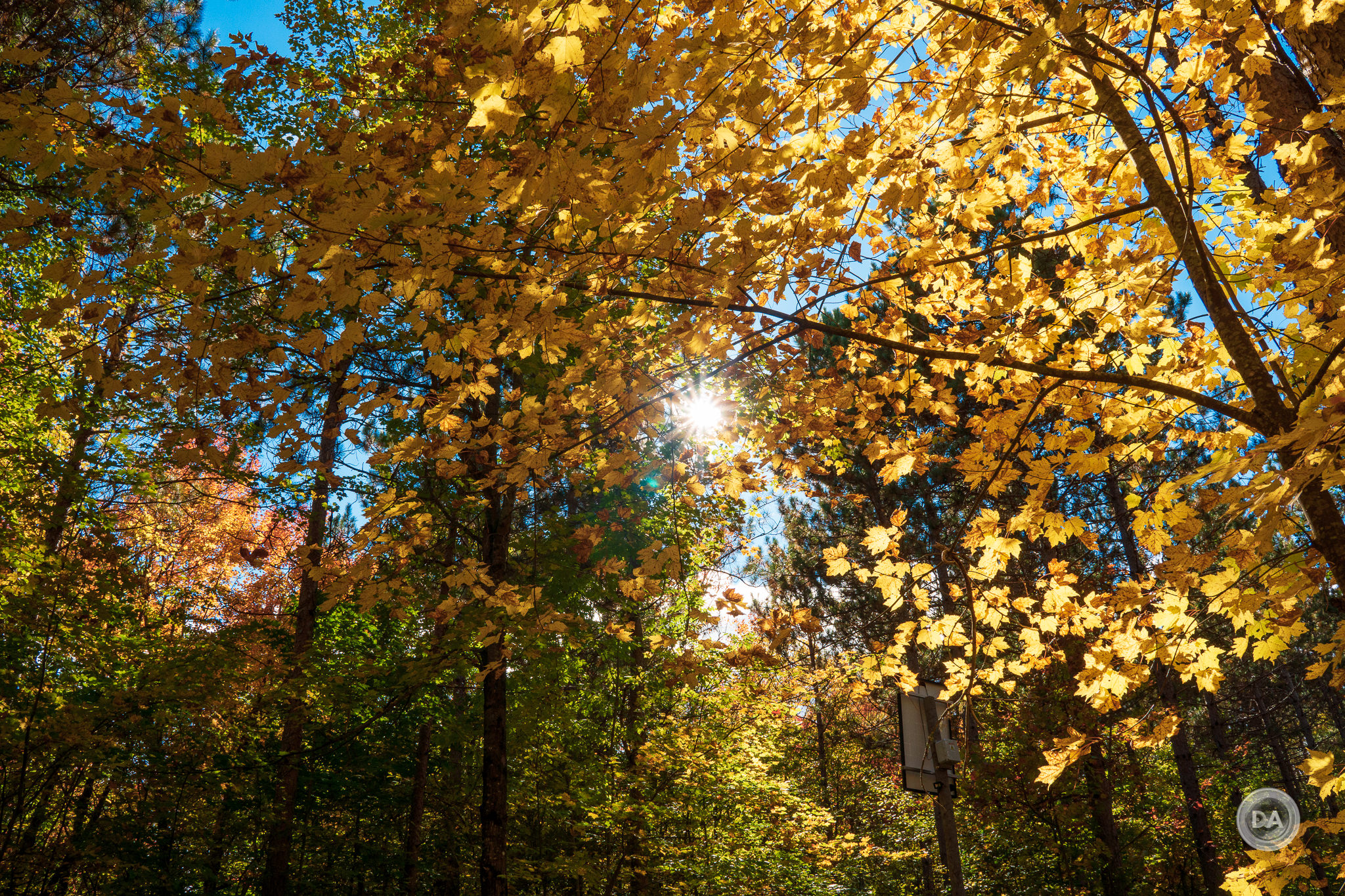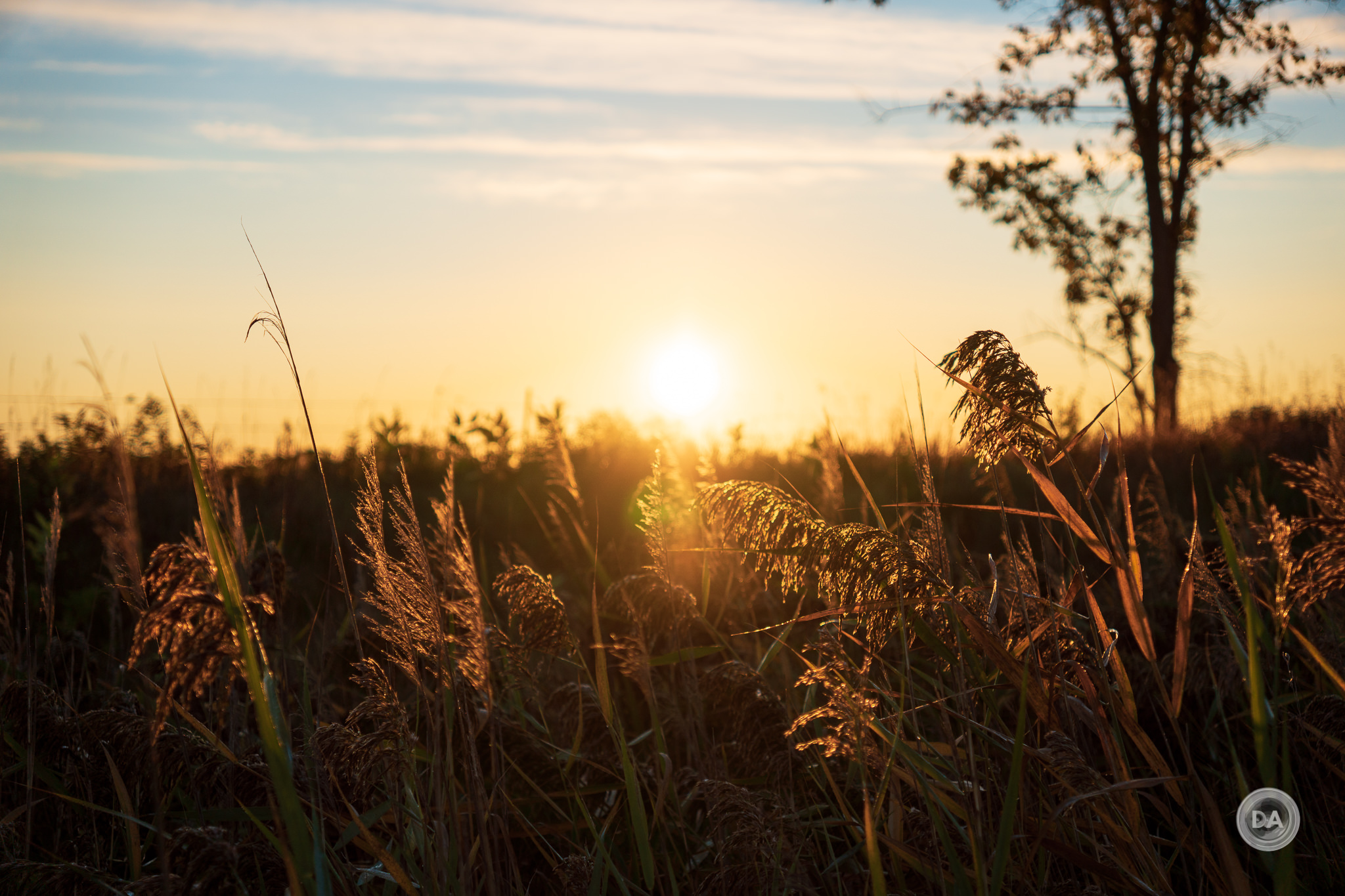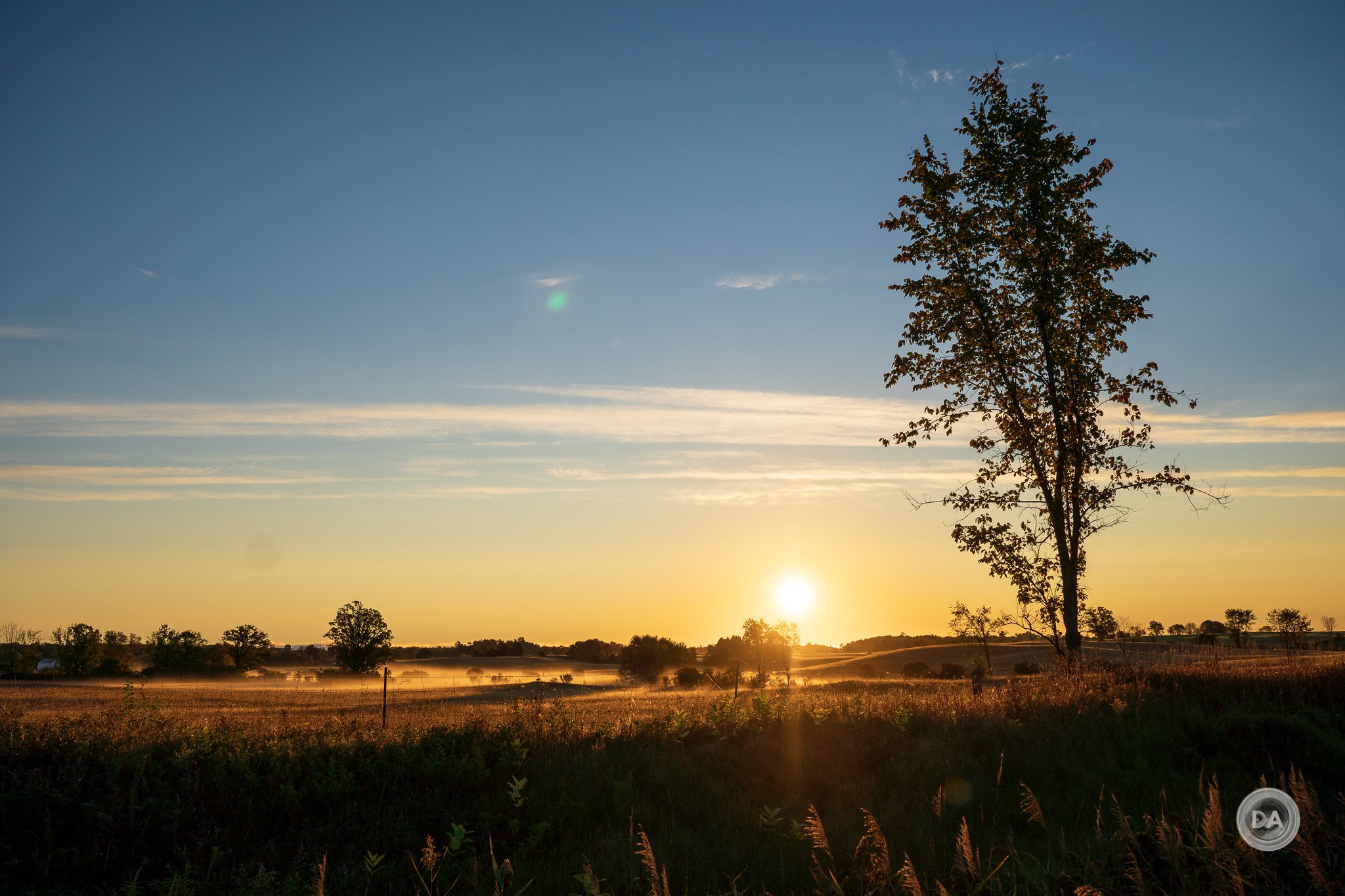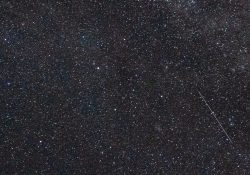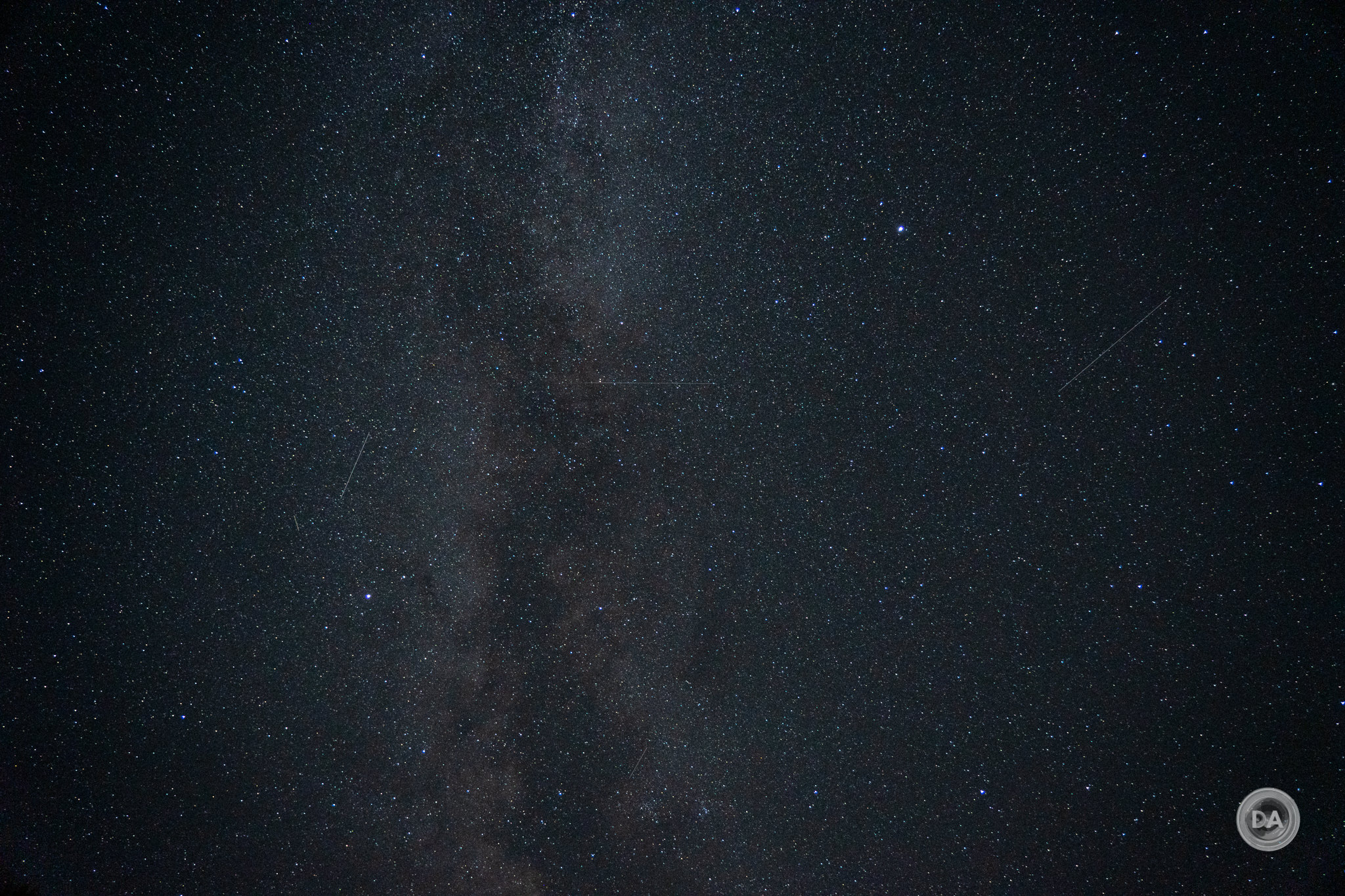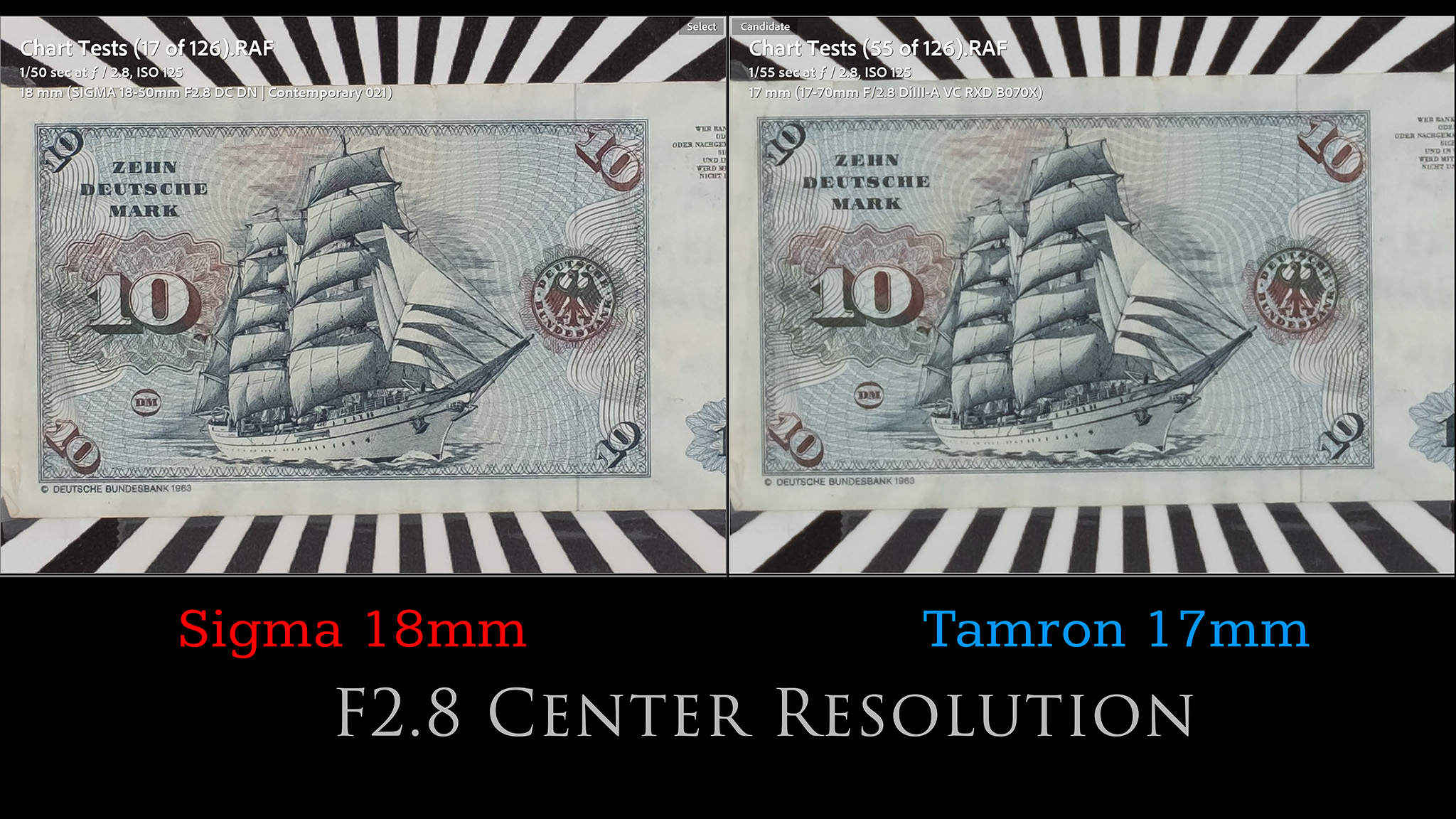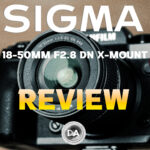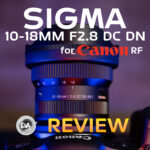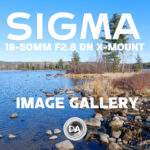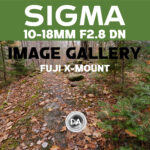
Earlier this year I was doing my review of the Canon EOS R50 compact APS-C mirrorless camera. While I liked many things about the camera itself, I couldn’t help lament the state of the lens options for Canon’s RF-S mount. At the time of the review (two years since the release of the EOS R7, the first of Canon’s RF mount APS-C cameras), this was the sum total of the available lenses.

Yuck. I couldn’t imagine a less exciting lineup of lenses. The fastest maximum aperture in the bunch was F3.5, and that lens is F4 and smaller before you make it to 30mm. Canon clearly knew they had a problem, for between the time that I filmed my review and the time I released it, they announced that certain Sigma (and later Tamron) lenses would become available for RF-S (the APS-C version of Canon RF). Now, to be clear, this is only for APS-C lenses, but for now it seems like Canon is going to let third parties solve their APS-C lens problem. This is great news for consumers, however, because it means that lenses like the Sigma 18-50mm F2.8 DC DN are now available for Canon RF. I love the Sigma 18-50mm, having first reviewed it when it released on Sony back in 2021 and then last year when it became available on Fuji X-mount. I found it useful enough on Fuji that I purchased one myself, and have happily used it since. So how well has the 18-50mm survived the transition to Canon. You can find out my thoughts in the video review below…or read on.
Follow Me @ YouTube | Patreon | Instagram | Facebook | DA Merchandise | Flickr | 500px | X
__________________________________________________________________________________________________
Thanks to Gentec (Sigma’s Canadian Distributor), for sending me a review loaner of this lens. As always, this is a completely independent review. All opinions and conclusions are my own. *The tests and most of the photos that I share as a part of my review cycle have been done with the 45MP Canon EOS R5, which I reviewed here.
__________________________________________________________________________________________________
The good news is that this is a great porting of the lens. It’s pretty clear here that this is no “reverse engineering” but rather a direct license of focus algorithms, as this is not only the best focus experience of the now three platforms that I’ve tested the lens on, but also one of the better focus experiences I’ve had on Canon in general amongst lenses priced under $1000.

This review of the 18-50mm RF is not a whole new review, but rather an update on how the 18-50mm RF translates to Canon RF. I’ve already tested the image quality at both a 24MP (Sony in 2021) and 40MP (Fuji in 2023)) level, so that covers the full gambit (and more) of what’s available on RF bodies. There are no optical surprises here, but I’m always curious to see how the lens changes in terms of its dimensions, but, most importantly, how well it autofocuses on a platform that it wasn’t originally designed for.
The 18-50mm RF is one of six lenses released by Sigma for Canon RF, and those six lenses represent all of the APS-C mirrorless lenses they’ve released over the past three years. You can see my review of the original releases on Sony here.
- Sigma 16mm F1.4
- Sigma 23mm F1.4
- Sigma 30mm F1.4
- Sigma 56mm F1.4
- Sigma 10-18mm F2.8
- Sigma 18-50mm F2.8
Sigma’s DC DN lenses have all fallen under the umbrella of their Contemporary lineup, and while Sigma has proven willing to experiment with new features and design elements within the ART and Sport lineups, the Contemporary lenses have all stuck to a fairly rigid design formula. That continues to be the case here, so this little zoom mostly looks and handles pretty similarly to other lenses in the lineup.

There’s nothing new here on the RF mount, but the lens is more of a standout on Canon due to having essentially zero quality competition. The 18-50mm RF is a genuine treat as an addition here. Why? Here’s a few reasons:
- Has at least a weather sealing gasket
- Better build quality than RF-S lenses
- Includes a lens hood
- Constant F2.8 aperture
- Good up close performance
- Great autofocus on RF
In essence, the poor competition makes this lens a star, though frankly I still found it one of the more compelling options on these other platforms as well.
The crop factor on Canon is different than Sony or Fuji, so the zoom range works a little different. Fuji/Sony have a crop factor of 1.5x, which means that the lens goes from a full frame equivalent of 27-75mm. Canon’s APS-C crop is 1.6x, and so that changes the effective focal range to 29-80mm. You’ll miss the extra bit of width at 18mm:

…but appreciate the extra bit of reach on the telephoto end.

Sigma 18-50mm RF-Mount Build and Handling
There’s really only one significant change to the 18-50mm on Canon, and that is that the lens mount portion of the lens has to be flared out to accommodate the much larger diameter of the RF mount. You can see that difference when compared to the Fuji X-mount version on the right.

As this is now the widest portion of the lens, the lens diameter changes from 61.6mm (2.4″) to about 68mm by my measurement. I found the RF version to be just a hair shorter than the X-mount version, measuring more like 75mm than the 76.8mm of the X-mount (3″). That extra bit of girth near the lens mount also adds a tiny bit of weight, with the RF version weighing 294g (10.37oz) on my scale, which is about 10g heavier. I haven’t seen the dimensions and weight for the RF mount published by Sigma, so I’m using my own measurements.

Other than these minor physical changes to the RF version, the build is otherwise identical to either the E-mount of X-mount versions.
The 18-50mm F2.8 is a mixture of metals and “thermal composites” (high grade engineered plastics) in construction, and the construction feels quality in the hand. It is built around a metal mount.

The overall build quality just feels much higher than any of the Canon RF-S lenses that I’ve tested so far. Some of them even have plastic lens mounts. This feels like a quality lens.
There is a weather sealing gasket at the lens mount (thicker here on the RF mount than on previous versions), but, like other Contemporary lenses, there are no internal seal points.
The only thing on the barrel is the focus and zoom rings. The closest to the lens mount is is the focus ring, which is fairly narrow (10mm), ribbed, and moves smoothly. It is has light damping and doesn’t have a lot of feel, and is actually slightly compromised here by the thicker lens mount flare, which clearly wasn’t part of the original design. It crowds the focus ring a bit, and I found my thumb slightly pushed off the ring.

The second ring is the wider (20mm) of the two, and it is the zoom ring. The zoom action is very smooth, with a single inner barrel that extends about 25mm. The inner barrel is well engineered and without any wobble.

Also included is a fairly shallow petal-shaped lens hood. It has a ribbed texture section to help you grip it for removal and will reverse for storage.

There are seven rounded aperture blades inside, and these do a reasonably good job of maintaining a circular shape with the lens stopped down.
A look at the front of the lens shows a 55mm front filter thread along with a significant amount of glass inside; this is the huge advantage over the Canon kits lenses with a much smaller maximum aperture value.
Like many recent zoom lenses, there is a separate minimum focus distance for wide angle (18mm) and telephoto (50mm), with interim focal lengths being on a sliding scale between them. The highest magnification (as per usual) is at the 18mm end, where you can focus as close as 121mm. Only one problem – when the lens is mounted on the camera, the distance from the sensor to the end of the lens (without the lens hood) is 95mm, leaving only 26mm of working distance between you and your subject. Here’s what that looks like:
It is basically unusable, as even without the lens hood it is almost impossible for the lens to not be shading your subject. If you add the lens hood, you actually exceed that minimum focus distance. So, in theory, you can achieve a maximum magnification of nearly 0.36x, but you are unlikely to ever achieve that in the field. Here’s what that looks like if you were able to achieve it:
You’ll see a lot of field curvature and a very small sweet spot of focus/sharpness. My advice: back up a little and get much nicer results with more like magnification in the high 20s instead.
The telephoto end doesn’t market as well, but is much more useful. You can focus as closely 30cm there, but the resulting magnification of 0.20x is much more easily attainable.
The wide open sharpness and contrast there is not off the charts, but is good enough to produce nice real-world results like this:
There is no optical stabilization on the lens, unfortunately. I happened to test on a camera that had in body image stabilization, so I didn’t miss it, but many of Canon’s smaller APS-C cameras don’t have IBIS.
As noted, on other platforms the Sigma is a rather plain lens in terms of features and build. Because of so little competition on Canon, however, it feels next level in terms of build and handling. It’s a nicely made little lens that follows a familiar, well-executed Sigma formula.
Autofocus and Video
Sigma continues to utilize a stepping focus motor (STM) in these smaller lenses as the elements are smaller and lighter than lenses and don’t require the higher torque that some of their large aperture full frame or sports oriented lenses. Autofocus is something that Canon does very, very well, and it is clear to me that Sigma has received access to the focus protocols and algorithms, as the 18-50mm RF definitely handles like a first party lens.
The STM motor provides fast, quiet, and accurate autofocus. Eye detection works well, and I was able to get nice “people” photos with quick and easy autofocus.

Autofocus speed was excellent, near instantaneous both indoors and outdoors, and utterly reliable and accurate.
I got well focused results when I took some photos of Nala (working hard).


Even without a trackable subject in frame I was able to get good focus. Here’s some foliage in the evening light.

I’ve got zero complaints about the autofocus for stills; I got a lot of well focused results without any drama. This is a seamless transition to Canon RF.

On the video front my findings were also excellent. My autofocus pulls tests were smooth and confident, with none of the settling or pulsing that I saw on Fuji.
On a positive note focus breathing is fairly low.
My “hand test” (where I block the view of my face with my hand and then move the hand to allow focus to pop back to the eye) also went well. Focus transitioned confidently from my hand to my test and vice versa.
Unlike on Fuji, I also saw smooth focus results when zooming in and out while recording video. There was none of the shattering effect and focus readjustments, which shows again how far behind Fuji’s autofocus is.
This is a great lens all around when it comes to autofocus; a fantastic performance on Canon.
Sigma 18-50X Optical Performance
Sigma has given the 18-50mm F2.8 DN an optical design of 13 elements in 10 groups, and this includes 1 SLD element and 3 Aspherical elements. The MTF charts show a good performance in the center of the frame, fairly strong mid-frame results, and a dip into the corners.


In this section I will be reusing my results from the 40MP Fuji X-Trans sensor. It is higher resolution than anything Canon currently makes (current resolution points are between 24 – 33MP. Fuji’s images are also harder to sharpen than Canon, so you will have no problem getting beautiful results on Canon bodies. It has no problem producing beautiful images.

We’ll start by taking a look at distortion and vignette. Distortion is essentially identical to what I saw on Sony, with some strong barrel distortion at 18mm.
While Sigma lenses do receive good correction profile support on Canon, I turn off those corrections and do a manual correction so that I can see what’s being compensated for. I used a +24 to correct for the barrel distortion, but you can see that there is a mild mustache pattern left over.
Expect less vignette on Canon than what I saw on Fuji, with results more in line with what I saw on Sony. I had to use a +52 to correction vignette at 18mm on Sony. On Fuji? A whopping +92! The good news is that the profile correction does a good job with both distortion and vignette. This F2.8 image has received no addition correction, but you can see that there is no visible shading on the snow.
As you progress through the zoom range the distortion starts to invert and eventually becomes a pincushion style distortion that is more strongly pronounced at 50mm.
I needed to dial in a -11 to correct the pincushion distortion, though it was nice and linear and cleaned up well. Vignette remains heavy, however, requiring a +88 to correction (again, about +40 more than on Sony).
There are longitudinal chromatic aberrations (LoCA), but they aren’t particularly strong. I mostly see them in the form of a blue-green fringing after the plane of focus:


You will see a light fringing around specular highlights as well:
Likewise there is a bit of lateral chromatic aberrations (LaCA) that show up near the edges of the frame. You can see them in the transitions from black to white.
The LaCA is easy to clear up by clicking the “Remove Chromatic Aberrations” button in software or in camera for JPEGs or video.
Chromatic aberrations are a little more visible at a pixel level on high resolution cameras for the simple reason that the fringing occupies more pixels and gets more highly magnified at a pixel level, but they aren’t any more obvious when viewing the image as a whole.
So how about the main event? High resolution cameras also expose any lack of contrast or a lens’ inability to resolve fine details because those flaws are more highly magnified. Here’s a look at our test chart.
Here is a closer look at roughly 180% crops from the center, mid-frame, and lower right corner at 18mm, F2.8:



The center looks great, the mid-frame acceptable sharp, but the corner looks quite low contrast. Stopping down to F4 provides a little more contrast and detail, and F5.6 looks better still, but the corners never get exceptionally sharp.
Real world images look great in the center and mid-frame, but the corners don’t look as crisp.
F8 is a lateral move (not really any sharper than F5.6) due to diffraction starting to soften the image (diffraction comes very early on a high resolution body). After F8 the image will show more obvious softening, and by the minimum aperture of F22 the image looks very soft in my tests.
At 24mm the image shows improvement across the frame, but in particularly in the corners, which are radically sharper.
It’s easier to get sharp landscape images at 24mm due to the more consistent sharpness profile.
28mm is largely the same as 24mm, with a very consistent sharpness profile across the frame.
At 35mm there is a dip in contrast relative to the high water mark of 24-30mm.
Sharpness and contrast do improve if you stop the lens down, however, and by landscape apertures like F5.6 the results look good.
Things rebound a bit at 50mm, and, if they aren’t the peak of sharpness like 24mm, the results look quite good even at F2.8.
When stopped down the lens can produce very nice landscape images with strong contrast.
Here’s another 50mm that looks nice at F2.8, with a nice depth of field that highlights the subject. Contrast at a pixel level isn’t incredibly high, but viewed normally the image looks great.
The quality of the bokeh is mostly good. Zoom lenses like this rarely create the most creamy bokeh, and the Sigma 18-50mm is no exception. At the same time, however, I felt like images looked pretty good. The bokeh here is actually really nice, particularly in the top half of the image.
This shot shows a bit of outlining in some of the defocused textures, which does detract a bit from the bokeh.
This shot is somewhere in between, but overall I feel like it looks pretty nice.
One final example at a little further distance. In some ways this image is a little more impressive, as background isn’t quite as out of focus. The 18-50mm avoids any nervous looking textures in the transition zones, and there is a reasonable amount of 3D pop on the subject.
The look of sunbursts is nice but nothing special. The blades don’t have the distinction of straight blades, but it is nice enough to add a little extra touch to images.
Flare resistance was also fairly good, with only minimal ghosting artifacts showing up in real world images.
Contrast remained strong, however with only a bit of a flare pattern showing in some images.
I was able to test for astrophotography during my review of the E-mount version of the lens, and found a bit of coma smear in the corners along with a bit of generalized fringing on the brightest points of light.
I was able to get nice looking Milky Way images with a lot of asteroid action, too.
Before closing this section, I think it is important to put the Sigma’s overall performance into perspective. The Tamron 17-70mm F2.8 is much larger, and yet it doesn’t really hold up better on the Fuji 40MP sensor. When I compared the two on the wide end, the Sigma clearly had the sharper center of the frame along with a slightly better mid-frame, though the Tamron showed a little better in the corner.
On the telephoto end there is some give and take, with the Sigma looking slightly sharper in the center and the Tamron looking a bit sharper in the corner. The Sigma’s mid-frame is clearly better, however, with more contrast and detail visible.
The fact that the Sigma delivers slightly more sharpness on the 40MP despite being so compact is very impressive. Here’s a gallery of a few more images taken on Canon RF.











Conclusion
I was very encouraged by what I saw from the Sigma 18-50mm F2.8 DC DN on Canon RF mount. It feels like a seamless port over other than the slightly odd lens shape due to the much larger RF mount. Autofocus was fantastic, image quality looks great, and the lens remains very impressive despite its small size.

This is a great little general purpose/travel lens, as it affords enough flexibility in the focal length to shoot many scenes, and the constant maximum aperture of F2.8 gives you more flexibility in different lighting situations.

It’s great to see Canon’s RF mount starting to open to these third party offerings, and very quickly we will see the amount of lenses available for RF-S (APS-C) tripled due to Canon’s move to open the protocols. This lens isn’t cheap, per se, at $599 USD, but I’d rather spend a few hundred extra bucks to buy this lens over the current Canon options any day of the week.

Pros:
- Fantastic job porting to Canon
- Extremely compact and lightweight
- Nicely made with a weather sealing gasket
- Useful focal range with constant F2.8 aperture
- Great autofocus performance
- Good video AF performance
- Minimal focus breathing
- Good sharpness across zoom range
- Nice bokeh in most situations
- Fairly good coma performance
- Nice build and handling than RF lenses
Cons:
- No optical stabilizer
- Fairly strong barrel distortion at 18mm
- Some ghosting in certain lighting conditions
- Flare for RF lens mount slightly interferes with MF ring
__________________________________________________________________________
GEAR USED:
Purchase the Sigma 18-50mm RF @ B&H Photo | Adorama | Amazon | Camera Canada | Amazon Canada | Amazon UK | Amazon Germany
_______________________________________________________________
Purchase the Canon EOS R50 @ Camera Canada | B&H Photo | Adorama | Amazon | Amazon Canada | Amazon UK | Amazon Germany
___________________________________________________________________
Purchase a Canon EOS R7 @ B&H Photo | Amazon | Camera Canada | Amazon Canada | Amazon UK | Amazon Germany | Ebay
————————————————————————–
Want to support this channel? Use these affiliate links to shop at: B&H Photo | Amazon | Adorama | Camera Canada | Amazon Canada | Amazon UK | Ebay | Make a donation via Paypal
Buy DA Merchandise https://bit.ly/TWIMerch

Keywords: Sigma 18-50 DN Review, Sigma 18-50mm Review, Sigma 18-50mm F2.8, Sigma 18-50mm F2.8 DN, Sigma 18-50mm F2.8 DN Review, DC, DN, F2.8, Canon R50, R100, Canon R7, RF-Mount, 33MP, Review, Hands On, Dustin Abbott, Real World, Comparison, Sharpness, Bokeh, Flare Resistance, Autofocus, Image Quality, Sample Images, Video, Portrait, Photography, let the light in, #letthelightin, DA, Weather Sealing, #SIGMA, #SIGMA1850mmContemporary, #SIGMAContemporary, #sigmadcdn

